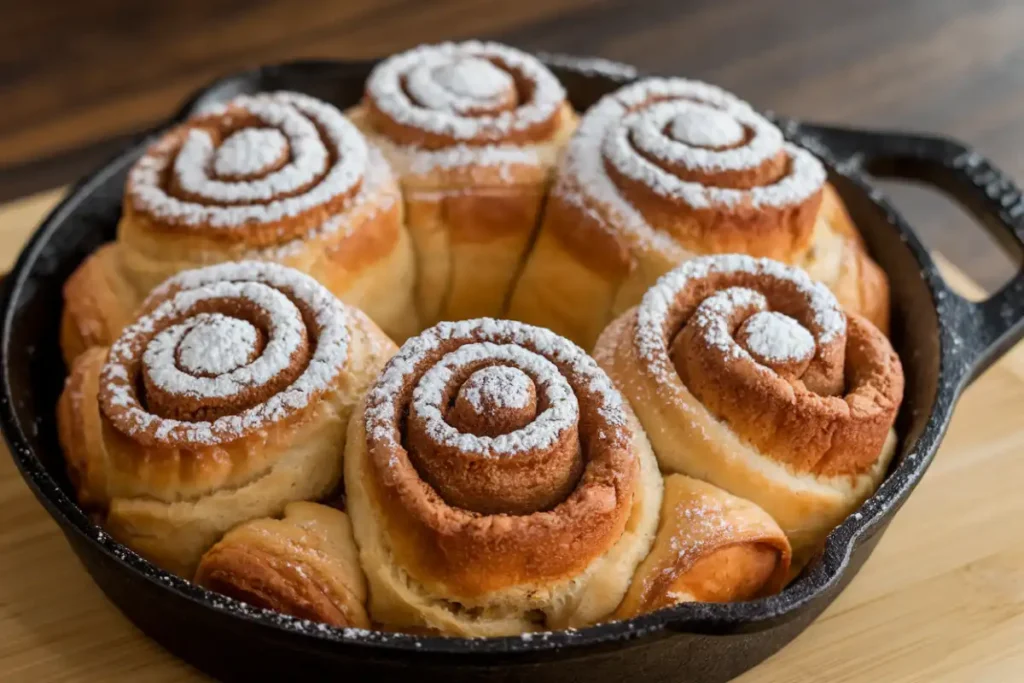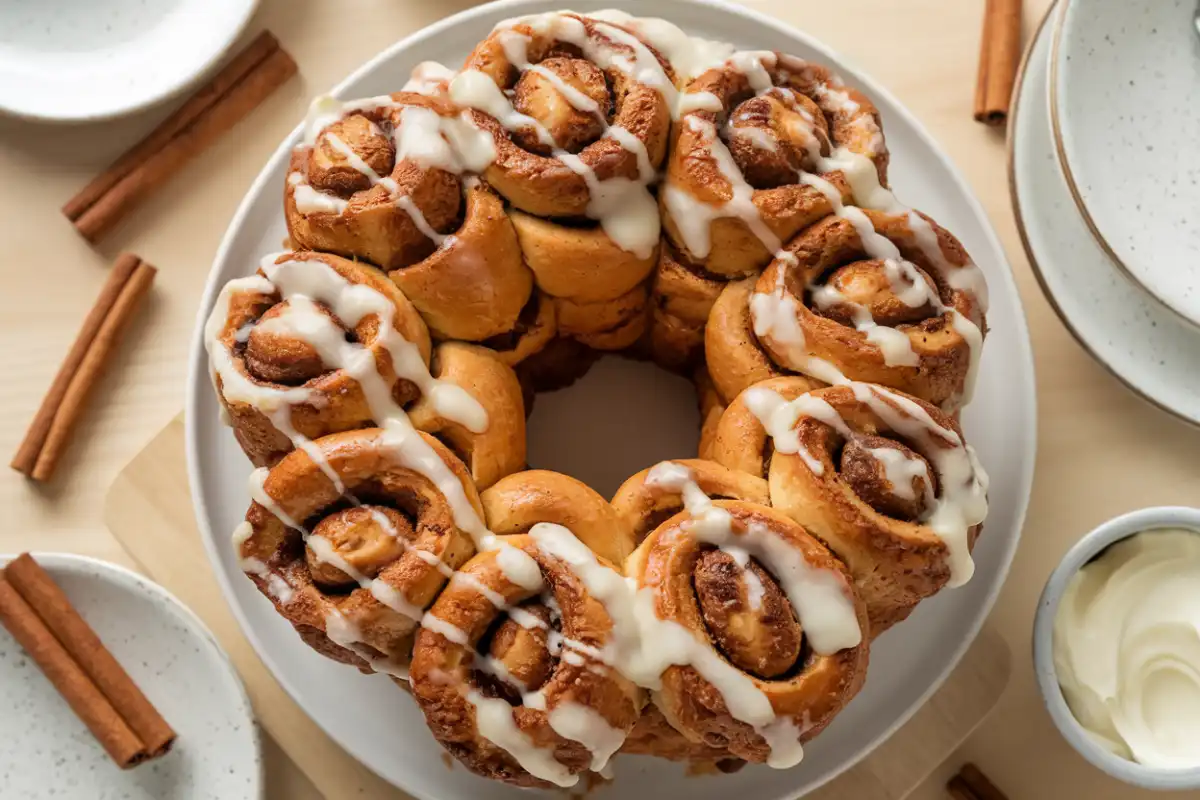Cinnamon rolls, with their fluffy dough, sweet cinnamon filling, and rich icing, are a beloved treat around the world. But what if I told you that a simple addition could elevate your cinnamon rolls from delicious to absolutely divine? That secret ingredient is heavy cream. Pouring heavy cream over cinnamon rolls before baking them is a technique that has gained popularity among bakers, and for good reason. In this article, we’ll explore why this method works, how it transforms your cinnamon rolls, and tips for achieving the best results.
The Basics: What Does Heavy Cream Do?
Heavy cream, also known as heavy whipping cream, is a rich dairy product with a high-fat content, typically around 36-40%. This high-fat content gives it a luscious texture and the ability to add richness and moisture to baked goods. When you pour heavy cream over cinnamon rolls before baking, the cream seeps into the dough, resulting in a gooey, tender texture that is hard to resist.
The Science Behind the Cream
To understand why heavy cream works so well with cinnamon rolls, it’s helpful to delve into the science of baking. Cinnamon rolls are essentially a sweet yeast bread. The dough is made with flour, sugar, butter, eggs, and yeast, which combine to create a soft, tender crumb. However, during baking, moisture from the dough can evaporate, leading to rolls that are dry or overly firm.
When you pour heavy cream over the rolls before baking, the cream penetrates the dough, adding extra moisture and fat. This additional moisture prevents the rolls from drying out in the oven, while the fat contributes to a softer, richer texture. The cream also mixes with the sugar and cinnamon filling, creating a caramelized, sticky layer at the bottom of the rolls that adds an extra dimension of flavor.
Enhancing the Flavor Profile
Cinnamon rolls are all about balance. The sweetness of the sugar and cinnamon, the buttery richness of the dough, and the creamy icing all come together to create a perfect bite. By adding heavy cream, you’re enhancing the overall flavor profile of the rolls.
1. Richness: The fat in the heavy cream adds richness to the dough, making each bite more indulgent. This richness complements the sweetness of the cinnamon filling and the tangy sweetness of the icing, creating a well-rounded flavor experience.
2. Caramelization: As the rolls bake, the cream interacts with the sugar and butter in the filling, causing it to caramelize. This caramelization results in a sticky, sweet layer at the bottom of the rolls that adds both texture and flavor.
3. Creamy Texture: The cream not only adds moisture to the dough but also contributes to a creamy, velvety texture. This texture is particularly noticeable in the center of the rolls, which are often the most coveted part.
The Role of Moisture in Baking
Moisture is a key factor in baking, particularly when it comes to yeast doughs like cinnamon rolls. Too little moisture can result in dry, dense rolls, while too much can make the dough soggy and undercooked. The addition of heavy cream strikes the perfect balance, ensuring the rolls remain soft and moist without becoming overly wet.
When you pour heavy cream over the unbaked rolls, it slowly absorbs into the dough as it bakes. This gradual absorption ensures that the rolls stay moist from the inside out, resulting in a tender crumb. The cream also helps to create a steamy environment in the oven, which further contributes to the softness of the rolls.
Comparing Techniques: With and Without Heavy Cream
To truly appreciate the impact of heavy cream on cinnamon rolls, it’s helpful to compare the results with and without this technique.
Without Heavy Cream:
- The rolls bake up light and fluffy but can sometimes be dry, particularly on the edges.
- The cinnamon-sugar filling remains distinct but can become slightly gritty as the sugar doesn’t fully melt.
- The rolls are delicious, but they lack that extra layer of indulgence that makes them truly special.
With Heavy Cream:
- The rolls are incredibly soft and tender, with a moist crumb that melts in your mouth.
- The cinnamon-sugar filling becomes a gooey, caramelized layer that adds both sweetness and texture.
- The overall flavor is richer, with a more pronounced buttery taste that elevates the entire experience.
Tips for Using Heavy Cream on Cinnamon Rolls
If you’re ready to try this technique at home, here are some tips to ensure your cinnamon rolls turn out perfectly:
1. Use High-Quality Cream: Since the cream plays such a crucial role in the final texture and flavor of the rolls, it’s important to use high-quality heavy cream. Look for cream with a fat content of at least 36% for the best results.
2. Adjust the Amount: The amount of cream you use can vary depending on your personal preference and the size of your cinnamon rolls. A good starting point is to use about 1/2 to 3/4 cup of heavy cream for a standard batch of cinnamon rolls. If you prefer a more gooey texture, you can increase the amount slightly.
3. Pour Slowly: When pouring the cream over the rolls, do so slowly and evenly to ensure it seeps into all the nooks and crannies. This will help distribute the moisture evenly throughout the dough.
4. Experiment with Timing: Some bakers prefer to pour the cream over the rolls right before baking, while others like to do so halfway through the baking process. Experiment with both methods to see which one gives you the texture and flavor you prefer.
5. Don’t Skip the Icing: The heavy cream adds richness and moisture, but the icing is still an essential component of cinnamon rolls. The contrast between the creamy, rich rolls and the sweet, tangy icing is what makes cinnamon rolls so irresistible.
Beyond Cinnamon Rolls: Other Uses for Heavy Cream in Baking
While heavy cream is a game-changer for cinnamon rolls, its benefits extend to many other baked goods. Here are a few examples of how heavy cream can enhance your baking:
1. Biscuits: Adding a splash of heavy cream to biscuit dough results in tender, flaky biscuits with a rich, buttery flavor.
2. Cakes: Incorporating heavy cream into cake batter can create a moist, velvety crumb that stays soft for days.
3. Pies: Use heavy cream in pie fillings, particularly in custard or cream pies, to achieve a luxurious, silky texture.
4. Scones: Heavy cream can replace some or all of the butter in scone recipes, resulting in a rich, crumbly texture.
5. Bread Pudding: Pouring heavy cream over bread pudding before baking adds richness and ensures the pudding remains moist and custardy.

Common Questions and Concerns
As with any baking technique, using heavy cream on cinnamon rolls may raise some questions. Here are a few common concerns and their answers:
1. Will the cream make the rolls soggy?
No, the cream will not make the rolls soggy if used correctly. It’s important to pour the cream slowly and allow it to seep into the dough gradually. This ensures the rolls remain moist without becoming overly wet.
2. Can I use a dairy-free alternative?
Yes, you can use a dairy-free alternative to heavy cream, such as coconut cream or almond milk, but the results may vary. Coconut cream is the best substitute for a similar texture, but it will add a coconut flavor to the rolls.
3. Do I need to adjust the baking time?
Depending on the amount of cream used, you may need to extend the baking time slightly to ensure the rolls are fully cooked. Keep an eye on them during the last few minutes of baking, and use a toothpick to check for doneness.
4. Can I use this technique with store-bought cinnamon rolls?
Absolutely! While homemade cinnamon rolls benefit the most from this technique, it can also enhance the texture and flavor of store-bought rolls. Just be sure to adjust the amount of cream based on the size and quantity of the rolls.
5. Is this method suitable for other types of rolls?
Yes, this method can be used for other types of sweet rolls, such as sticky buns or caramel rolls. The heavy cream will add the same moisture and richness, resulting in soft, gooey rolls.
Conclusion: The Magic of Heavy Cream
In the world of baking, small changes can make a big difference, and adding heavy cream to your cinnamon rolls is one such change. This simple technique transforms ordinary rolls into a decadent treat, with a moist, tender crumb and a rich, caramelized filling that’s hard to resist. Whether you’re making cinnamon rolls for a special occasion or just because, give this method a try—you may never go back to the traditional way of baking them.
By understanding the science behind the cream, experimenting with different techniques, and using high-quality ingredients, you can create cinnamon rolls that are truly next-level. So the next time you’re in the kitchen, don’t hesitate to reach for that carton of heavy cream—it’s the secret to the best cinnamon rolls you’ve ever tasted.

